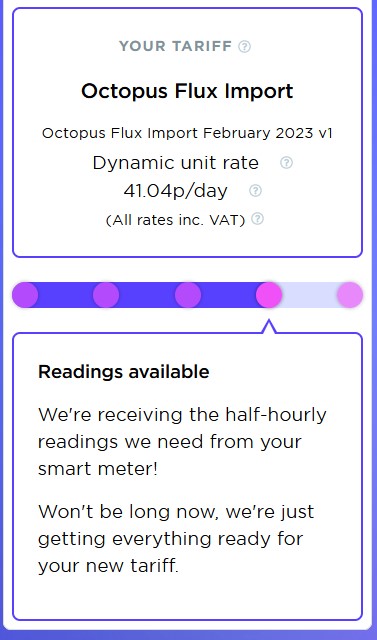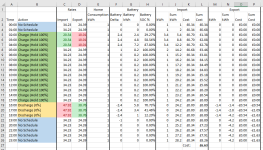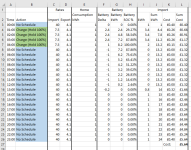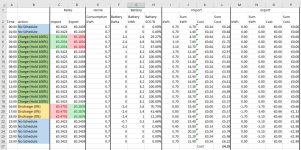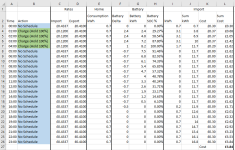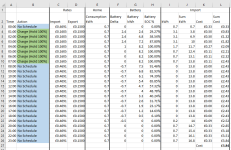Soldato
It's Flux import only for now I think? I'm sticking on Go for now to keep costs down, even if the export rates are poor, I'm not really exporting anything at the moment.
Just go into the portal online and then into My Inverter => Settings. You can set a timed charge of the battery here.
I'm not 100% on this, but if I was on Flux I wonder if the best strategy is to:
Set charge to 100% from 02:00 - 16:00
Set discharge from 16:00 - 19:00
By doing this you will hold the battery at 100% all day, no matter the weather (excess generated solar will go to export to grid on a good day). Then export for the maximum payment you can get down from 100% to whatever it can export into that 3 hour window.
This seems sensible because you lower the battery cycles, it would be one complete cycle per day. Thoughts?
I guess it's a balance between export rate and import rate and usage. If the weather is good then the batteries will fill and there's no need to top up. I'll need to have a think about it.. problem is 4-7pm is prime cooking time so it's going to have to be a balance between grid usage and discharge.
In my suggested method above it limits the cycles, if you alternatively charge to 100% between 02:00 - 05:00 and then allow solar top it up before exporting, there is ultimately more wear on the batteries for potential small gains in the daylight hours.
Also depends if you want to attempt to export as much as possible for the maximum payment you can get.
If you can use most of your generation efficiently with Go I think that will still win in the long term, though it's a bit more annoying to min/max it.
I can't be on Go
I like your method I just need to work it out based on our usage.
The way to approach flux is going to be highly dependent on your own personal set up and consumption habits. To min max it you’d need to be looking at it daily which is going to be quite a hassle.
For me, I’d want to be holding onto about 5kwh of battery to see me though the evening peak and then just letting the solar and battery do it’s thing for the rest of the time. I’d be Charging the battery off peak in winter and not in summer.
I'm all signed up now too.......
In my mind I'd be charging to 100 in the 2am to 5am window then exporting everything else during the day and forcing a discharge between 4 and 7pm. With my gen1 inverter I could maximally charge and discharge 7.8 in this period so something like £2 every day profit on top of whatever you export which cojld be 20 or 30kwh in the height of summer and that's if you have to fully charge your batteries.



